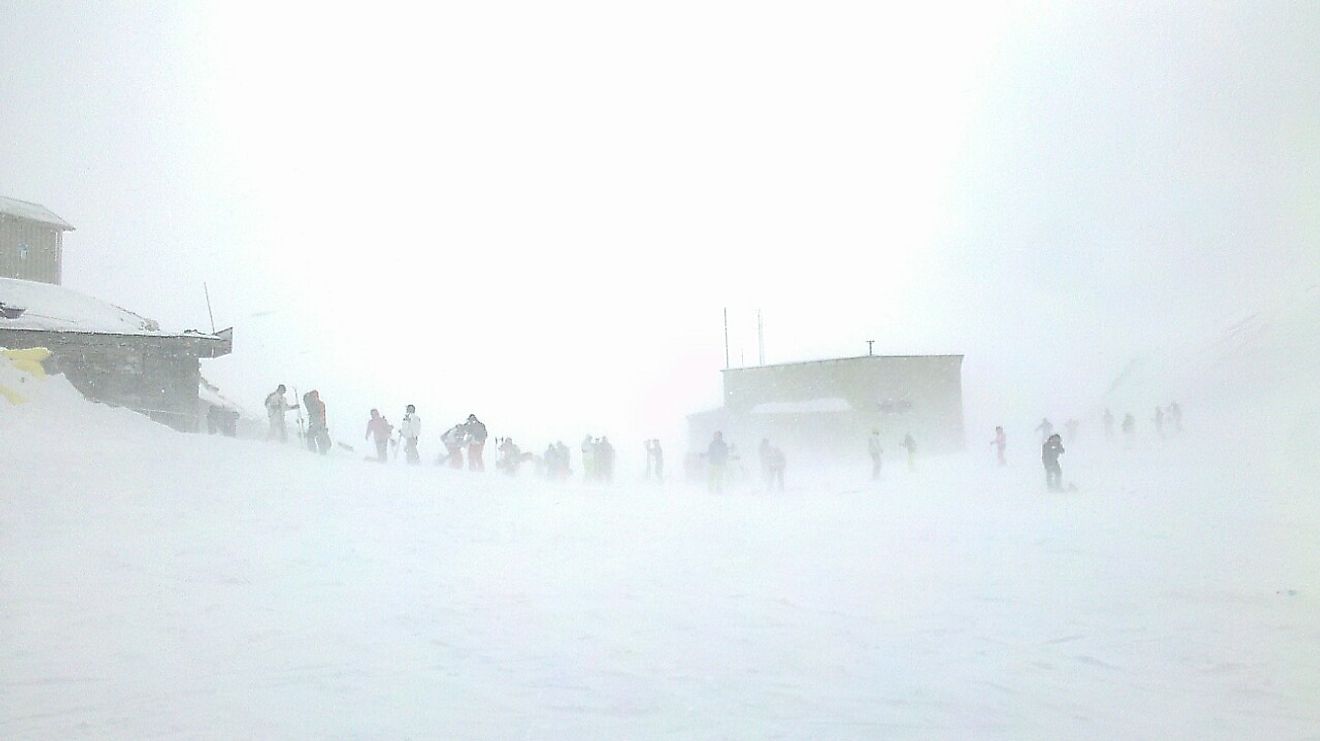The Ten Deadliest Blizzards In History

Mother Nature can be one of the most destructive forces on earth, throwing deadly natural disasters in the paths of humans. Hurricanes, earthquakes, flooding, fires, and blizzards are all events that are difficult to survive and often results in heavy losses to life and property. So, what exactly is a blizzard? Well, it is a severe snowstorm in very windy conditions that lasts for hours. During a blizzard, people lose visibility and find it difficult to fight the wind. These snowstorms can knock out basic services and leave towns and villages inoperable for days at a time. Tragically, blizzards can also take lives unexpectedly. This article takes a look at some of the deadliest blizzards in history.
Deadliest Blizzards
Iran Blizzard
The deadliest blizzard on record happened in Iran in February 1972 when 4,000 lives were lost. The Iran Blizzard dropped more than 10 feet of snow and lasted for six days across the northern and central regions of the country. In southern Iran, however, the numbers were much more drastic. They received 26 feet of snow, and two towns had no survivors. The snow took out power lines, buried towns, and crushed transportation. People were left without food, water, heat, and medical supplies. When the storm finally stopped for a 24-hour period, rescue workers tried to retrieve survivors but were largely unsuccessful. The storms started again, and they were forced to abandon the mission and left behind bread for anybody who could dig their way out of the snow tombs.
Carolean Death March
The second worst blizzard in history was in 1719 when 3,000 people between Sweden and Norway were killed. Referred to as the Carolean Death March, this storm occurred during the Great Northern War after Sweden lost territory to Russia and decided to move in on Norway. This attempt was unsuccessful and after King Charles XII of Sweden died, Swedish troops were ordered back to Sweden. While crossing the mountains, the blizzard hit. On the first night, 200 soldiers died. Horses died, equipment was burned for warmth, and supplies were left behind as the remaining soldiers tried to escape. Left on the mountainside, another 3,000 soldiers froze to death as some of the men arrived at the nearest town. Over the next few days and after finding lodging, battle fatigued and malnourished, another 700 men died.
Afghanistan Blizzard
The 2008 Afghanistan Blizzard is the third deadliest on record. In February 2008, this blizzard claimed the lives of 926 people. With temperatures reaching -22 degrees fahrenheit and nearly 6 feet of snow on the ground, this was one of the harshest winters ever for the country. Mountain villages were cut off from larger cities and people who walked into towns were taken to hospitals where feet and hands were amputated. In addition to human lives, hundreds of thousands of sheep and cattle were killed, leaving the people who survived without their primary source of income after the storm.
Other deadly blizzards
Other deadly blizzards include: Great Blizzard of 1888 in the US (400 deaths), 1993 North American Storm Complex in the US (318), Schoolhouse Blizzard in the US (235), Hakkoda Mountains in Japan (199), North American Blizzard of 1996 in the US (154), 1940 Armistice Day Blizzard in the US (144), and the 2008 Chinese Winter Storms in China (133).
Staying Safe During a Blizzard
Preparing and following safety suggestions is key to surviving blizzards. During the winter, make sure to listen to weather forecasts, so there are no extreme weather surprises. When driving, wear warm clothes, have a full tank of gas, and pack a winter emergency kit that includes shovel, tire chains, blankets, food, and water. If stuck in the vehicle, make sure to make continuous movements to increase circulation and stay hydrated. The windy conditions of blizzards result in frostbite, so make sure all skin is covered and wear mittens rather than gloves. Keep an emergency kit in the house in case the electric or heat goes out. This kit should include food, water, flashlights, and blankets. Be careful with heating devices to avoid house fires. If caught outdoors, seek dry shelter as quickly as possible, stay hydrated (do not eat snow), and do small exercises to keep blood flowing.
The Ten Deadliest Blizzards In History
| Rank | Death toll (estimate) | Event | Location | Date |
|---|---|---|---|---|
| 1 | 4,000 | 1972 Iran blizzard, Iran | Iran | 1972 |
| 2 | 3,000 | Carolean Death March, Sweden/Norway | Sweden/Norway | 1719 |
| 3 | 926 | 2008 Afghanistan blizzard, Afghanistan | Afghanistan | 2008 |
| 4 | 400 | Great Blizzard of 1888, US | United States | 1888 |
| 5 | 318 | 1993 North American Storm Complex,US | United States | 1993 |
| 6 | 235 | Schoolhouse Blizzard, US | United States | 1888 |
| 7 | 199 | Hakko-da Mountains incident, Japan | Japan | 1902 |
| 8 | 154 | North American blizzard of 1996, US | United States | 1996 |
| 9 | 144 | Armistice Day Blizzard, US | United States | 1940 |
| 10 | 133 | 2008 Chinese winter storms, China | China | 2008 |











